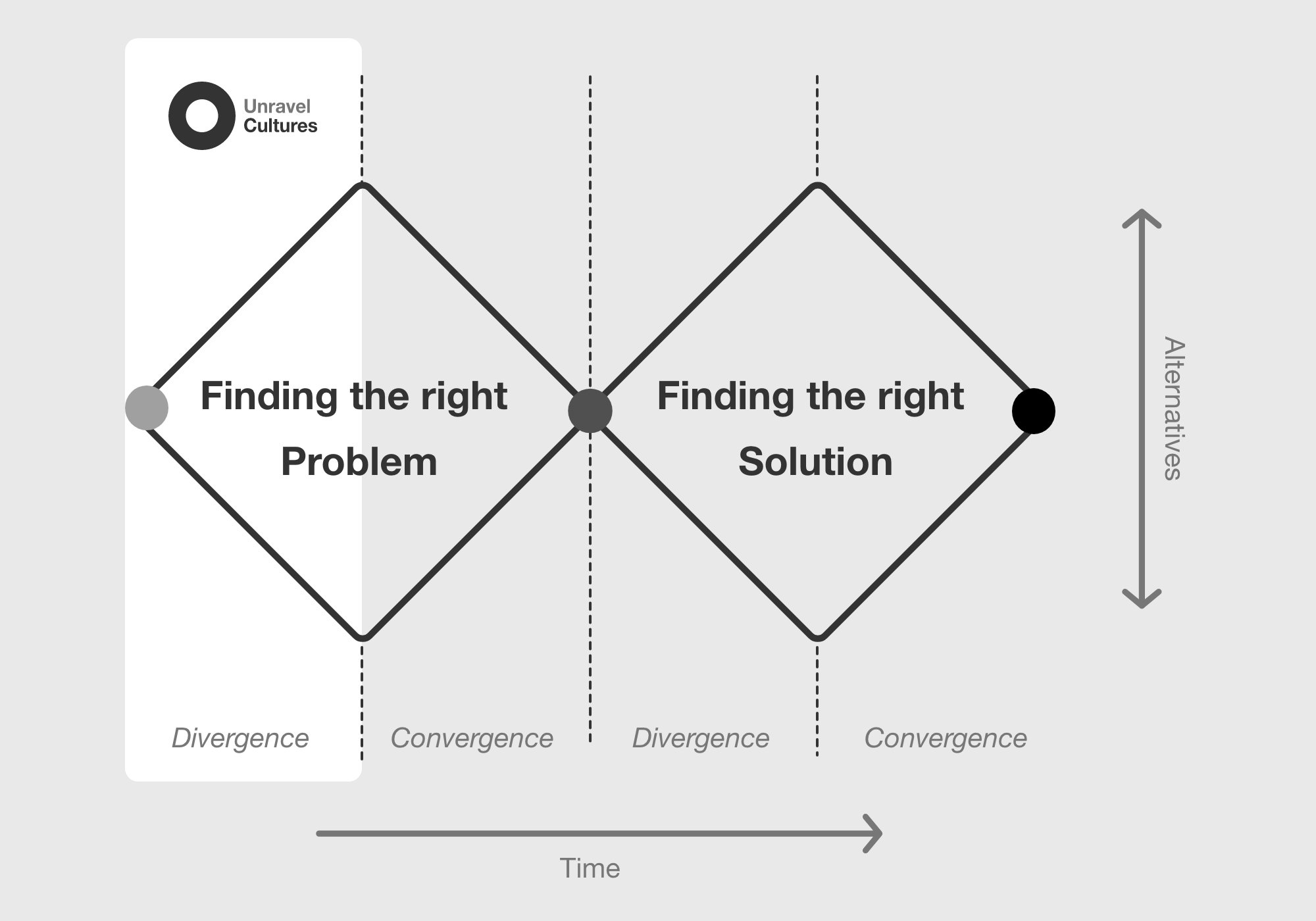Unravel Cultures
A method that provides designers with support in designing for other cultures than their own.
Method Principles
This is the starting point of your research, not the end
This method is designed to help you, a designer, to get started when designing for a culture other than your own. It helps you understand the differences and similarities between cultures.
It is important to know that this method will lead you to a deeper understanding of cultures but does not directly offer it. It is intended as a low key tool, to form an overall picture of the differences and similarities of cultures.
You are biased, just like the rest of the world
In our method, we use data from you, real-world people. People are creatures that are naturally biased. What is normal for one is not immediately normal for the other, it depends on the point of view, the choice of the metaphor and therefore, the culture. So you need to understand that our data is human and therefore not free from failures.
Culture is complicated and cannot be mastered easily
It is important to know that cultures are so complex, that you can never capture one on a single A4. If you want to have a broader understanding of culture then you have to study people, experience their country, talk to them, live with them and eat and drink with them.
Where to use in the Design Process?
Here you can see where you can use this method in your Design process.
These points illustrate a general use case of when this method can be useful in your design process
One.
You have barely started with your research.
Two.
You know who the user is.
Three.
You know what your design question challenge is.
Four.
You know that the user is from a different culture than your own.
Five.
But you haven’t actually talked to your user yet.
Six.
But you already want to start brainstorming for concepts/ideas.
Seven.
That is why you want to get a general idea of the culture for which you are going to design.
Eight.
And therefore you want know how that culture differs and is similar to your culture..
Play with our method 👇
Build empathy, by laying down physical or digital papers you can compare the different cultures & characteristics of each country.
You can also print the canvas
& make your own to compare!
The user flow of Unravel Cultures
In the user flow you can see how the complete system of Unravel Cultures works.
A short summary of the proces
Reading books
Returning from India, we read many books to better understand design and culture. As a starting point for making a design tool.
Conducting interviews
We spoke to a Indian design students to understand their perspective on design. We also asked if there were cultural differences that they noticed working/speaking with us?
Design sprint.
After reading the books we did a Google design sprint with Miro. Normally you would do a design sprint physically but due to the corona rules, it had to be done online. From this sprint came the first prototype that formed the basis for Unravel Cultures.
How did this project arise?
Exchange in India 👇
During my exchange period, I went to a design school in Bengaluru (India) with a fellow interaction designer because we wanted to learn more about intercultural design.
During this exchange, we became fascinated by the Indian way of life and habits which resulted in differences in design approaches.
We were supposed to stay in India for four months but unfortunately, due to COVID, we had to return two months earlier than expected. In the following two months, we developed a design method called Unravel Cultures.
Paper prototyping
Usertesting
“If you know the culture you can start to Design. Design is about how
you study people and what they are trying to accomplish.“
— Unravel Cultures












